| Latest | Greatest | Lobby | Journals | Search | Options | Help | Login |
|
|
|
This topic is archived. |
| Home » Discuss » Topic Forums » Sports |
|
| Jack Rabbit
|
Sun Feb-22-09 05:52 PM Original message |
| The Jack Rabbit Chess Report (February 22): Sofia and Linares and Moscow, oh, my |
|
Topalov and Kamsky Knotted at Halftime
 Russo-American grandmaster Gata Kamsky defeated former FIDE world champion Veselin Topalov of Bulgaria in 73 moves yesterday in the fourth round of the candidates' match in Sofia, Bulgaria to square the event at two points each. Topalov won the second game Sunday. The two other games ended in draws. The match is scheduled for eight games with the winner being the first player to obtain 4� points. If the match ends in a 4-4 tie, a round of rapid and blitz games will decide the winner. The winner of the match will challenge reighning world champion Vishy Anand to a title match later this year. Today is a rest day. Game 5 is scheduled for tomorrow. The final round, if necessary, is to be played Friday and playoff games, if necessary, on Saturday. Grischuk, Aronian Set pace in Linares 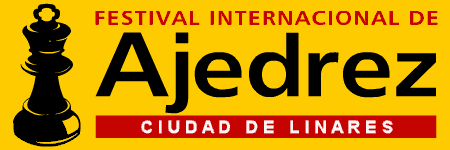 Grandmasters Alexander Grischuk of Russia and Levon Aronian of Armenia lead the 26th Cuidad de Linares Tournament in the Andalucian mining town of that name after four rounds with three points each. Both players have two victories with two draws. The reigning world champion, Vishy Anand of India, who is seeking his third consecutive Linares title, has two wins, a draw and a loss to trail the leaders by a half-point. In today's action, Aronian defeated Cuban grandmaster Leinier Dom�nguez in 92 moves, Anand scored a full point off grandmaster Wang Yue of China in 33 moves and Grischuk, playing Black, won his game against Azerbaijan's Teimour Radjabov in 41 moves. The only other game, between Norwegian GM Magnus Carlsen and Ukraine's Vassily Ivanchuk, ended in a draw after 34 moves. The players will have tomorrow off. The fifth round will be played Tuesday. Thew fourteen-round event, sometimes call the Wimbledon of Chess, is scheduled to end March 8, Linares is the birthplace of the famous Spanish classical guitarist, Andreas Segovia. Igor Kurnosov Leads Aeroflot Open after Six Rounds  Russian grandmaster Igor Kurnosov, who won the 2008-09 Hastings Chess Congress last month, has sole possession of first place in the seventh annual Aeorflot Open in Moscow with five points after six rounds. Kurnosov entered today's action tied for first with the tournament's top seed, Azerbaijani grandmaster Shakhiyar Mamedyarov, and Alexander Moiseenko of Ukraine with four points each. However, Kuronsov, playing Black, defeated Mamedyarov in just 21 moves while Moiseenko, also playing Black, battled Armenian GM Gabriel Sargissian 84 moves to a draw. The seventh annual Aeroflot Open Chess Tournament, the most prestigeous open event in chess, begins in Moscow Tuesday after opening ceremonies Monday. The nine round event, the most prestigeous open tournament in chess, runs through Wednesday with closing ceremonies and prize giving Thursday. As always, the winner of the Aeroflot Open will be given a birth in the grandmaster tournament at the Sparkassen Chess Meeting in Dortmund this July. Tiviakov Wins Pfalz Open  Reigning European champion and former two-time Dutch national champion Sergei Tiviakov won the second annual Pfalz Open Tournament in Neustadt, Germany, today with 7� points out of a possible nine. Tivakov was followed by nine players with seven points each, including Sebastian Bogner, the young German IM who finished tied for first at the Rilton Cup in Stockholm last month. The upstart tournament promises to become the second major mid-February open after the Aeroflot Open in Moscow. Calendar Cappelle la Grande Open 28 February-7 March. Reykjavik Open 4-13 March. European Individual Championships, Budva (Montenegro) 5-19 March. Melody Amber Rapid/Blind Tournament, Nice 13-27 March. Dubai Open 3-13 April. Gausdal Chess Classic (Norway) 7-15 April. Foxwoods Open, Mashantucket, Connecticut 8-12 April. Russian Club Cup (Team Championships), Sochi 30 April-12 May. US Chess Championship, St. Louis May. Exact dates TBA. MTel Masters, Sofia 9-19 May. Asian Championships, Subic Freeprot (The Philippines) 12-23 May. Chicago Open 22-25 May. Aerosvit International Tournament, Foros (Ukraine) 9-20 June. World Open, Philadelphia 29 June-5 July. Canadian Open, Edmonton 11-19 July. Czech Open, Pardubice 16 July-2 August. Biel Chess Festival 18-31 July. FIDE Grand Prix, Yerevan. 8-24 August. |
| Printer Friendly | Permalink | | Top |
| Jack Rabbit
|
Sun Feb-22-09 06:10 PM Response to Original message |
| 1. Topalov-Kamsky Candidates' Match, Sofia |
|
Edited on Sun Feb-22-09 06:18 PM by Jack Rabbit
Your humble hare acknowledges the assistance of Fritz 6.0 on analysis.
Diagrams on the Jack Rabbit Chess Report are made with Chess M�rida, a true type font that can be downlaoded free here. !""""""""# $tMvWlVmT% $OoOoOoOo% $ + + + +% $+ + + + % $ + + + +% $+ + + + % $pPpPpPpP% $RnBqKbNr% /(((((((() WHITE White to move (This position is a theoretical draw) More Games from Other Current Events to Follow Later Today. |
| Printer Friendly | Permalink | | Top |
| Jack Rabbit
|
Sun Feb-22-09 06:12 PM Response to Reply #1 |
| 2. Topalov - Kamsky, Round 1 (�-�) |
 Topalov and Kamsky Shake Hands before They Come out Fighting Veselin Topalov - Gata Kamsky Candidates' Match, Round 1 Sofia, 17 February 2009 West India Game: Indian Queen's Gambit (Exchange Opening) (Gr�nfeld Defense) 1.d4 Nf6 2.c4 g6 3.Nc3 d5 4.cxd5 Nxd5 5.e4
5...Nxc3 6.bxc3 Bg7 7.Bc4
7...c5 8.Ne2 Nc6 9.Be3 0-0 10.0-0 Na5
11.Bd3
11...b6 12.Qd2
12...e5 13.Bh6
13...cxd4 14.Bxg7 Kxg7 15.cxd4 exd4 !""""""""# $t+vW T +% $O + +oLo% $ O + +o+% $M + + + % $ + Op+ +% $+ +b+ + % $p+ QnPpP% $R + +rK % /(((((((() WHITE: Veselin Topalov Position after 15...ed4:p 16.f4!?
16...f6
17.e5!?
17...Bd7
18.exf6+ Qxf6 19.Ng3 Kh8
20.f5 gxf5 21.Bxf5 Bxf5
22.Rxf5!
22...Qd6 23.Raf1 Nc6 24.Ne4 Qe7
25.Qh6
25...Rxf5 26.Rxf5 Ne5!
27.h3
27...Ng6 28.Rh5 Rg8!?
!""""""""# $ + + + L% $O + W To% $ O + NmQ% $+ + + +r% $ + O + +% $+ + + +p% $p+ + +p+% $+ + + K % /(((((((() WHITE: Veselin Topalov Position after 28...Ra8g8 29.Nf6!
29...Rg7
30.Nxh7
30...Rxh7 31.Qxg6
31...Qe3+
32.Kf1 Qc1+ 33.Kf2 Qd2+ 34.Kg3 Qe3+ 35.Kh2 Qf4+ 36.Kg1 Qc1+ �-�
|
| Printer Friendly | Permalink | | Top |
| Jack Rabbit
|
Sun Feb-22-09 06:13 PM Response to Reply #1 |
| 3. Kamsky - Topalov, Round 2 (0-1) |
 Veselin Topalov Gata Kamsky - Veselin Topalov Candidates' Match, Round 2 Sofia, 18 February 2009 Spanish Petit Royal Game: Neo-Classical Defense (Berlin Defense/Beverwijk Variation) 1.e4 e5 2.Nf3 Nc6 3.Bb5 Nf6 4.0-0 Bc5
5.Nxe5
5...Nxe4
6.Qe2 Nxe5 7.d4
7...Qe7
8.dxc5!?
8...Nxc5!
9.Nc3?!
9...Ng6
10.Qh5 c6 11.Bg5 f6
12.Rae1
12...Ne6 13.Bd3 0-0
14.Bd2
!""""""""# $t+v+ Tl+% $Oo+oW Oo% $ +o+mOm+% $+ + + +q% $ + + + +% $+ Nb+ + % $pPpB PpP% $+ + RrK % /(((((((() WHITE: Gata Kamsky Position after 14.Bg5d2 14...d5!
15.f4 Qc5+ 16.Kh1 d4 17.Bf5 Rf7!?
18.Ne4 Qd5 19.Bxg6?!
19...hxg6 20.Qxd5 cxd5 21.Nd6 Rc7 22.c4?
22...dxc3!
23.Bxc3 d4 24.Bb4
24...Bd7 25.Rf2
!""""""""# $t+ + +l+% $OoTv+ O % $ + NmOo+% $+ + + + % $ B O P +% $+ + + + % $pP + RpP% $+ + R +k% /(((((((() WHITE: Gata Kamsky Position after 25.Rf1f2 25...a5!
26.Ba3 b5 27.b3 b4 28.Bb2 Ra6 29.Ne4
29...Rac6 30.Kg1
30...Rc2 31.g3 d3 32.Rd1 f5 0-1
|
| Printer Friendly | Permalink | | Top |
| Jack Rabbit
|
Sun Feb-22-09 06:15 PM Response to Reply #1 |
| 4. Kamsky - Topalov, Round 4 (1-0) |
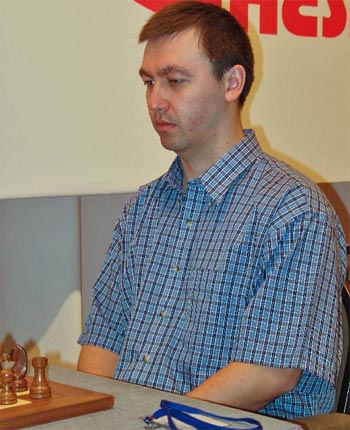 Gata Kamsky Gata Kamsky - Veselin Topalov Candidates' Match, Round 4 Sofia, 21 February 2009 Spanish Grand Royal Game: Zaitsev Defense 1.e4 e5 2.Nf3 Nc6 3.Bb5 a6 4.Ba4 Nf6 5.0-0 Be7 6.Re1 b5 7.Bb3 d6 8.c3 0-0 9.h3 Bb7
10.d4 Re8 11.Nbd2 Bf8 12.Ng5
12...Re7 13.d5 Nb8
14.Nf1 Nbd7 15.Ng3 g6
16.Bc2!?
16...h6!?
17.Nf3 Nb6
18.h4
18...Qd7 19.Nh2 Bg7 20.h5
20...Rf8 21.Nhf1 c6
22.dxc6
22...Qxc6 23.Ne3 Kh7 24.Qf3
24...Bc8 25.Rd1 Be6
!""""""""# $ + + T +% $+ + ToVl% $oMwOvMoO% $+o+ O +p% $ + +p+ +% $+ P NqN % $pPb+ Pp+% $R Br+ K % /(((((((() WHITE: Gata Kamsky Position after 25...Bc8e6 26.b3!
26...Qxc3 27.Bd2!
27...Qc7 28.Ba5 Qb8
29.Rd2
29...Nc8 30.Rad1 b4?
31.Qe2 Kh8 32.Bd3!
32...Na7
!""""""""# $ W + T L% $+ + ToV % $o+ OvMoO% $B + O +p% $ O +p+ +% $+p+bN N % $p+ RqPp+% $+ +r+ K % /(((((((() WHITE: Gata Kamsky Position after 32...Nc8a7 33.Rc1!
33...Nb5
34.Bxb5 axb5 35.Bxb4
35...Rd7 36.Rc6 Rfd8
37.Qd1 Bf8
38.Qc2 Kh7 39.Ba5 Re8 40.hxg6+ fxg6 !""""""""# $ W +tV +% $+ +t+ +l% $ +rOvMoO% $Bo+ O + % $ + +p+ +% $+p+ N N % $p+qR Pp+% $+ + + K % /(((((((() WHITE: Gata Kamsky Position after 40...fg6:p 41.Bc7!
41...Qb7 42.Bxd6
42...Bf7!?
43.Bb4
43...Bxb4 44.Rxd7 Qxd7 45.Rxf6 Re6
46.Nd5 Bf8 47.Rf3 Kg7 48.Rc3 Ra6 49.Rc7 Qd6
!""""""""# $ + + V +% $+ R +vL % $t+ W +oO% $+o+nO + % $ + +p+ +% $+p+ + N % $p+q+ Pp+% $+ + + K % /(((((((() WHITE: Gata Kamsky Position after 49...Qd7d6 50.Qe2
50...Kg8 51.Qxb5 Rxa2 52.Qb7 Ra1+
53.Kh2 Bxd5 54.exd5
54...Qf6 55.Qc8 Qh4+ 56.Qh3 Qxh3+
57.Kxh3 Rd1 58.Ne4 Ba3
59.Ra7 Bb4 60.Rb7 Ba3 61.f3
61...Kf8 62.Rb5
62...h5 63.Kg3 Rc1 64.Rb8+ Kf7 65.Rb7+ Kf8 66.Kf2
66...Rc2+ 67.Kf1
67...Rc1+ 68.Ke2 Rc2+ 69.Kd3 Rxg2 70.Ra7 Be7
71.d6 Bd8 72.Nc5 Ke8 73.Rh7 1-0
|
| Printer Friendly | Permalink | | Top |
| Jack Rabbit
|
Sun Feb-22-09 08:04 PM Response to Original message |
| 5. Linares |
|
Edited on Sun Feb-22-09 08:05 PM by Jack Rabbit
|
| Printer Friendly | Permalink | | Top |
| Jack Rabbit
|
Sun Feb-22-09 08:06 PM Response to Reply #5 |
| 6. Anand - Radjabov, Round 1 |
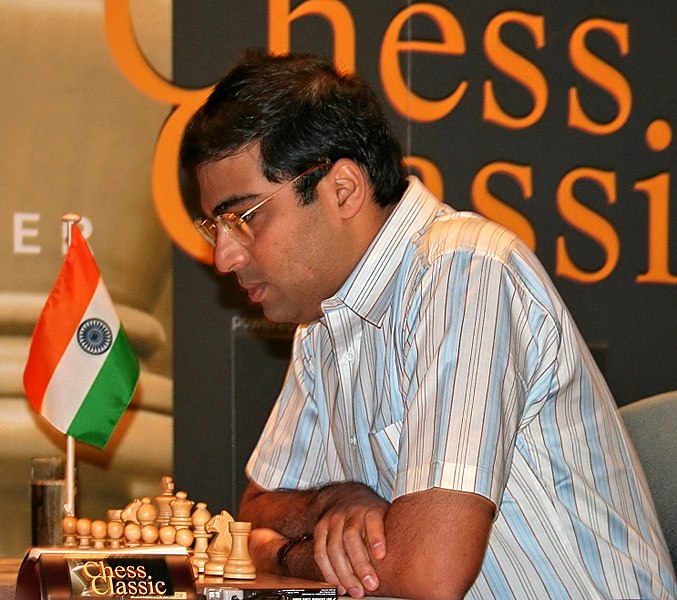 Vishy Anand Vishy Anand - Teimour Radjabov Ciudad de Linares, Round 1 Linares, 19 February 2009 Open Sicilian Game: Sveshnikov Defense (Novosibirsk Opening) 1.e4 c5 2.Nf3 Nc6 3.d4 cxd4 4.Nxd4 Nf6 5.Nc3 e5
6.Ndb5 d6 7.Bg5
7...a6 8.Na3 b5 9.Bxf6
9...gxf6 10.Nd5 Bg7
11.Bd3 Ne7 12.Nxe7 Qxe7 13.0-0
13...0-0 14.c4 f5 15.Qf3 d5!?
16.cxd5 fxe4 17.Bxe4 Rb8 18.Rfd1
18...f5
19.d6 Qf6 20.Bc6 Be6 21.Bd5 Rbd8 22.Qb3 Bf7
23.Nc2!?
23...Rxd6
24.Bxf7+ Rxf7 25.Rxd6 Qxd6 26.Ne3 f4 27.Rd1!
27...Qg6 28.Nd5 Bf8!?
29.f3 Kh8 30.Nc3 Rg7
31.Rd2 Bc5+ 32.Kf1 Bd4 33.Ne4
33...Rc7 34.Rc2 Rc6 35.Qd3
35...Kg7 36.b3 h6 !""""""""# $ + + + +% $+ + + l % $o+t+ +wO% $+o+ O + % $ + VnO +% $+p+q+p+ % $p+r+ +pP% $+ + +k+ % /(((((((() WHITE: Vishy Anand Position after (move) 37.g4!
37...fxg3 38.hxg3 Qe6 39.Kg2
39...Qc8 40.Rxc6 Qxc6 41.Qd2!?
41...Qe6 42.g4 Qc6?
!""""""""# $ + + + +% $+ + + L % $o+w+ + O% $+o+ O + % $ + Vn+p+% $+p+ +p+ % $p+ Q +k+% $+ + + + % /(((((((() WHITE: Vishy Anand Position after (move) 43.Ng3!
43...Kh7
44.Nf5
44...Bb6 45.Qd3
45...Kh8 46.Qe2 Bc7 47.Qd2 Kh7
48.Ne7
48...Qc5
!""""""""# $ + + + +% $+ V N +l% $o+ + + O% $+oW O + % $ + + +p+% $+p+ +p+ % $p+ Q +k+% $+ + + + % /(((((((() WHITE: Vishy Anand Position after 48...Qc6c5 49.Qd3+!
49...Kh8
50.Qd7!
50...e4 51.Qe8+
51...Kg7 52.Nf5+ Kf6 53.Qxe4 Bb6
54.Kh3 h5 !""""""""# $ + + + +% $+ + + + % $oV + L +% $+oW +n+o% $ + +q+p+% $+p+ +p+k% $p+ + + +% $+ + + + % /(((((((() WHITE: Vishy Anand Position after 54...h6h5 55.g5+!
55...Kxg5 56.Ne7 Kf6 57.Nd5+ Kg7 58.Qe5+ Kh6
59.Qf6+ Kh7 60.Qf7+ Kh6 61.Ne7 1-0
|
| Printer Friendly | Permalink | | Top |
| Jack Rabbit
|
Sun Feb-22-09 08:10 PM Response to Reply #5 |
| 7. Anand - Aronian, Round 2 |
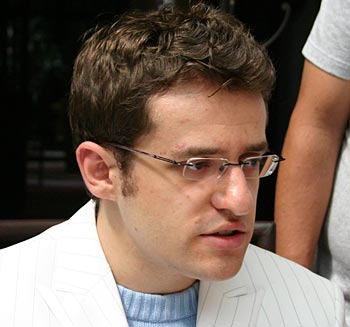 Levon Aronian Vishy Anand - Levon Aronian 26th Ciudad de Linares, Round 2 Linares, 20 February 2009 Semi-Slav Queen's Gambit: Meran Defense 1.d4 d5 2.c4 c6 3.Nf3 Nf6 4.Nc3 e6 5.e3 Nbd7 6.Bd3 dxc4
7.Bxc4 b5 8.Bd3 Bd6
9.0-0 0-0 10.Qc2 Bb7 11.a3 a6
12.Ng5!?
!""""""""# $t+ W Tl+% $+v+m+oOo% $o+oVoM +% $+o+ + N % $ + P + +% $P NbP + % $ Pq+ PpP% $R B +rK % /(((((((() WHITE: Vishy Anand Position after 12.Nf3g5 12...Bxh2+!?
13.Kxh2 Ng4+ 14.Kg1 Qxg5
15.f3!
15...Ngf6 16.e4
16...Qh4 17.Be3 e5
18.Ne2
18...Nh5
19.Qd2
19...h6
20.Rfd1 Rae8 21.Bc2 Re6
22.Bf2 Qe7 23.g4 Rg6!
24.Kf1 Nhf6 25.Ng3 Nxg4?!
26.fxg4 Qh4?
!""""""""# $ + + Tl+% $+v+m+oO % $o+o+ +tO% $+o+ O + % $ + Pp+pW% $P + + N % $ PbQ B +% $R +r+k+ % /(((((((() WHITE: Vishy Anand Position after 26...Qe7h4 27.Nf5!
27...Qxg4
28.Qc3?!
28...Re8
29.Qg3!
29...Qh5
30.Qh4 Qf3
31.Rd3
31...Qg2+ 32.Ke2 exd4
33.Rg3?
!""""""""# $ + +t+l+% $+v+m+oO % $o+o+ +tO% $+o+ +n+ % $ + Op+ Q% $O + + R % $ Ob+kBw+% $R + + + % /(((((((() WHITE: Vishy Anand Position after 33.Rd3g3 33...Rxg3!
34.Qxg3
34...Rxe4+
35.Kd2 Rg4 36.Qxg2
36...Rxg2 37.Ke2
37...c5 38.Rg1 Ne5
39.Rxg2 Bxg2 40.Kd2 h5 41.b4 Nc4+
42.Kc1 Nxa3 43.Bd1 cxb4
44.Bxh5 g6!
!""""""""# $ + + +l+% $+ + +o+ % $o+ + +o+% $+o+ +n+b% $ O O + +% $M + + + % $ + + Bv+% $+ K + + % /(((((((() WHITE: Vishy Anand Position after 44...g7g6 45.Ne7+ Kf8 46.Nxg6+ fxg6 47.Bxg6 Ke7 48.Bxd4
48...Kd6 49.Bd3 Nc4 50.Bg7 a5 51.Be2 Be4 52.Bf6 a4 53.Bg7 Kd5 0-1
|
| Printer Friendly | Permalink | | Top |
| Jack Rabbit
|
Sun Feb-22-09 08:11 PM Response to Original message |
| 8. Aeroflot Open, Moscow |
| Printer Friendly | Permalink | | Top |
| Jack Rabbit
|
Sun Feb-22-09 08:12 PM Response to Reply #8 |
| 9. Onischuk - Kurnosov, Round 2 |
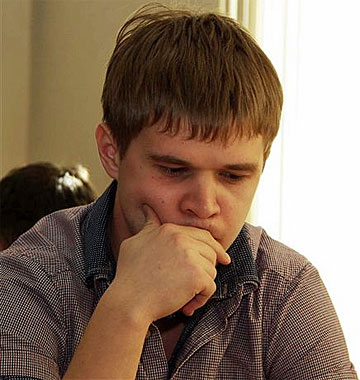 Igor Kurnosov Alex Onischuk - Igor Kurnosov Aeroflot Open, Round 2 Moscow, 18 February 2009 West India Game: Indian Queen's Gambit (Exchange Opening) (Gr�nfeld Defense) 1.d4 Nf6 2.c4 g6 3.Nc3 d5 4.Nf3 Bg7 5.cxd5 Nxd5 6.e4 Nxc3 7.bxc3 c5 8.Rb1
8...0-0 9.Be2 b6
10.0-0 Bb7 11.d5
11...Bxc3 12.Bc4 Bg7 13.Bb2!?
13...Ba6
14.Qe2
14...Qc8
15.Bxg7 Kxg7 16.e5!?
16...e6
17.Rbd1!?
17...exd5!
18.Rxd5 Bxc4 19.Qxc4 Nc6 20.Rd6!
20...Rd8 21.Rfd1
21...Qf5 22.Qa4?
!""""""""# $t+ T + +% $O + +oLo% $ OmR +o+% $+ O Pw+ % $q+ + + +% $+ + +n+ % $p+ + PpP% $+ +r+ K % /(((((((() WHITE: Alex Onischuk Position after 22.Qc4a4 22...Nxe5!
23.Rxd8 Nxf3+ 24.Kh1
24...Rxd8 25.Rxd8 Nd4 26.h3
26...Qb1+ 27.Kh2 b5 0-1
|
| Printer Friendly | Permalink | | Top |
| Jack Rabbit
|
Sun Feb-22-09 08:17 PM Response to Reply #8 |
| 10. Bartel - T. Kosintseva, Round 4 |
 Tatiana Kosintseva Mateusz Bartel - Tatiana Kosintseva Aeroflot Open, Round 4 Moscow, 20 February 2009 Spanish Grand Royal Game: Derl Opening 1.e4 e5 2.Nf3 Nc6 3.Bb5 a6 4.Ba4 Nf6 5.0-0 Be7 6.Bxc6
6...dxc6 7.d3
7...Nd7 8.Nbd2 0-0 9.Nc4
9...f6 10.Nh4 Nc5 11.Nf5 Ne6
12.Kh1
12...c5!?
13.a4
13...a5!?
14.f4
14...exf4 15.Bxf4 Nd4 16.Nxe7+ Qxe7 17.c3
17...Ne6 18.Bg3 b6 19.Ne3
19...Bb7 20.Qg4 Rae8 21.Nd5?!
21...Qd8 22.c4!?
!""""""""# $ + WtTl+% $+vO + Oo% $ O +mO +% $O On+ + % $p+p+p+q+% $+ +p+ B % $ P + +pP% $R + +r+k% /(((((((() WHITE: Mateusz Bartel Position after 22.c3c4 22...c6!
23.Ne3?!
23...Nd4?! 24.Rad1 Bc8 25.Qf4
25...Ne2
26.Qf2 Nxg3+ 27.Qxg3 Qd4
28.Qf2 f5!?
29.Nxf5 Qxf2 30.Rxf2
30...g6 31.Nd6 Rxf2 32.Nxe8 Rxb2 33.Kg1
33...Kf8 34.Nf6 Ke7 35.Nxh7 Bg4!
36.Rf1?
!""""""""# $ + + + +% $+ + L +n% $ Oo+ +o+% $O O + + % $p+p+p+v+% $+ +p+ + % $ T + +pP% $+ + +rK % /(((((((() WHITE: Mateusz Bartel Position after 36.Rd1f1 36...Be2!
37.Rf6
37...Bxd3
38.Rxg6 b5?
39.Rg7+?
39...Kd6 40.Ng5
40...bxa4 41.Nf7+
41...Ke6 42.Nd8+ Kf6 43.Rd7 Bxe4 0-1 !""""""""# $ + N + +% $+ +r+ + % $ +o+ L +% $O O + + % $o+p+v+ +% $+ + + + % $ T + +pP% $+ + + K % /(((((((() WHITE: Mateusz Bartel Final position after 43...Bd3e4:p
|
| Printer Friendly | Permalink | | Top |
| Jack Rabbit
|
Sun Feb-22-09 08:22 PM Response to Reply #8 |
| 11. Naiditsch - Gajewski, Round 1 |
|
This game is a very instructive Knight ending. Herr Naiditsch wins the game in spite of being pawn down throughout most of it.
 Arkadij Naiditsch Aeroflot Open, Round 1 Moscow, 17 February 2009 Spanish Petit Royal Game: Gothic Defense 1.e4 e5 2.Nf3 Nc6 3.Bb5 Nf6 4.0-0 Nxe4 5.d4 Nd6 6.Bxc6 dxc6 7.dxe5 Nf5 8.Qxd8+ Kxd8 9.Nc3
9...Ke8 10.Ne4
10...Be6
11.h3!?
11...h5!?
12.Bg5
12...Be7
13.Rad1 b6
14.Rd2 Rd8 15.Rxd8+
15...Bxd8 16.Bxd8 Kxd8 17.Neg5
17...Bd5 !""""""""# $ + L + T% $O O +oO % $ Oo+ + +% $+ +vPmNo% $ + + + +% $+ + +n+p% $pPp+ Pp+% $+ + +rK % /(((((((() WHITE: Arkadij Naiditsch Position after 17...Be6d5 18.e6!?
18...Bxe6 19.Ne5
19...Kc8 20.Nexf7 Bxf7 21.Nxf7
21...Re8 22.g4 Nd4
23.c3 Nf3+ 24.Kg2 hxg4
25.hxg4 Re1 26.Rxe1
26...Nxe1+ 27.Kf1 Nd3 28.b3
28...Nc1!
!""""""""# $ +l+ + +% $O O +nO % $ Oo+ + +% $+ + + + % $ + + +p+% $+pP + + % $p+ + P +% $+ M +k+ % /(((((((() WHITE: Arkadij Naiditsch Position after 28...Nd3c1 29.Ke1!
29...Nxa2
30.Kd2 b5 31.Ne5
31...b4
32.c4!
32...Nc3 33.Kd3 c5 34.f4!
34...Kd8 35.f5 Ke7 36.g5 Na2
37.Nc6+ Kf7?
!""""""""# $ + + + +% $O O +lO % $ +n+ + +% $+ O +pP % $ Op+ + +% $+p+k+ + % $m+ + + +% $+ + + + % /(((((((() WHITE: Arkadij Naiditsch Position after 37...Ke7f7 38.Na5!
38...Ke7
39.Ke3 Nc3 40.Nb7 Nd1+ 41.Kf3
41...Nc3
42.Nxc5
42...Kd6
43.Nb7+ Ke7
44.Na5 Ke8 45.Ke3 Nd1+ 46.Ke2
46...Nc3+ 47.Kf3 Kf8 48.Ke3 Nd1+ 49.Kd4
49...g6
50.fxg6 Kg7
51.Nc6 Kxg6 52.Nxa7 Nc3 53.Nb5 Na2 54.c5 1-0
|
| Printer Friendly | Permalink | | Top |
| Jack Rabbit
|
Sun Feb-22-09 08:25 PM Response to Original message |
| 12. Pfalz Open, Neustadt |
| Printer Friendly | Permalink | | Top |
| Jack Rabbit
|
Sun Feb-22-09 08:26 PM Response to Reply #12 |
| 13. Tiviakov - Stips, Round 1 |
|
In Swiss System events, the opening round is often called "the first round slaughter" becuase the lower-ranked players are up against the top seeds. Here reigning European champion and former two-time Dutch national champion Sergei Tiviakov dispatches a German player rated about 500 points lower in just 21 moves in the first round of Pfalz Open.
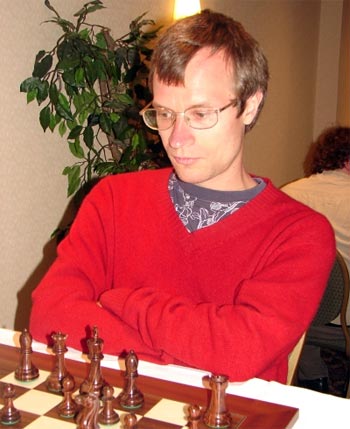 Sergei Tiviakov Sergei Tiviakov - Felix Stips Pfalz Open, Round 1 Neustadt, 15 February 2009 Closed Sicilian Game: Spanish Opening 1.e4 c5 2.Nc3 Nc6 3.Bb5
3...Nd4
4.Bc4 e6 5.Nge2
5...Nf6 6.0-0 a6 7.d3
7...d5?
8.exd5! exd5 9.Nxd5 Nxd5
!""""""""# $t+vWlV T% $+o+ +oOo% $o+ + + +% $+ Om+ + % $ +bM + +% $+ +p+ + % $pPp+nPpP% $R Bq+rK % /(((((((() WHITE: Sergei Tiviakov Position after 9...Nf6d5:N 10.Nxd4!!
10...cxd4 11.Qh5!
11...Be7!?
12.Bxd5!
12...0-0
13.Re1 Bf6
14.Bd2 g6 15.Qf3 Kg7
!""""""""# $t+vW T +% $+o+ +oLo% $o+ + Vo+% $+ +b+ + % $ + O + +% $+ +p+q+ % $pPpB PpP% $R + R K % /(((((((() WHITE: Sergei Tiviakov Position after 15...Kg8g7 16.Bb4!
16...Re8 17.Rxe8 Qxe8 18.Re1 Be6 19.Bxe6 fxe6 20.Qxb7+!
20...Kg8 21.Rxe6!! 1-0
|
| Printer Friendly | Permalink | | Top |
| Jack Rabbit
|
Sun Feb-22-09 09:48 PM Response to Original message |
| 14. Update (Sunday Night): Mamedyarov accues Kurnosov of cheating, withdraws from Aeroflot |
|
From ChessBase.com
Dated Monday, February 23 Top seed Mamedyarov withdraws from Aeroflot Open Shakhriyar Mamedyarov is the top seed in the 2009 edition of the Aeroflot Open in Moscow (February 17�26). After five rounds he was leading, together with Alexander Moiseenko and Igor Kurnosov. In round six he was crushed by Kurnosov in 21 moves. Mamedyarov filed an official complaint, essentially accusing his opponent of cheating, and withdrew from the event. Breaking news. More details at the link. |
| Printer Friendly | Permalink | | Top |
| Jack Rabbit
|
Wed Feb-25-09 07:32 PM Response to Original message |
| 15. Update (Wednesday): Bacrot, Moiseenko take Aeroflot -- Topa up in Sofia -- Grischuk leads Linares |
|
Bacrot, Moiseenko tie for top spot in Aeroflot
French granmster Etienne Bacrot and Slovenian GM Alexander Moiseenko shared first place in the prestigious Aeroflot Open after winning their respective final round games today in Moscow. Both players entered today's competition tied for second place behind Armenian grandmaster Arman Pashikian, who took over sole possession of first place in yesterday's eighth round when he defeated grandmaster Igor Kurnosov of Russia, who had been leading or sharing the lead for most of the week. Bacrot, playing Black, defeated Pashikian today in 62 moves while Moiseenko, with White, got the better of China's Zhou Weiqi in 48 moves. In other Aeroflot news, Russian IM Tatiana Kosintseva, one of only three women competing at the Aeroflot, scored 5� points and a perfermance rating of 2702. This appears good enough for Tanya to receive a grandmaster norm. As threatened, top seed Shakhiyar Mamedyarov withdrew from the tournament after losing to Kurnosov in just 21 moves in round 6 on Sunday. Mamedyarov, miffed that Kurnosov left the table after every move, accused his opponent of cheating by getting assistance from the Rybka computer program in the men's room. However, Kurnosov was never seen in the men's room during the game, but was seen outside the playing hall smoking. Moveover, the game was in the realm of theory for a full sixteen moves and the matching matching of Kurnosov's moves with Rybka were just as likely part of Kurnosov's home preparation. The protest was disallowed. Topalov leads Kamsky by one in candidates' match Former FIDE world champion Veselin Topalov took a one point lead over American grandmaster Gata Kamsky Monday by winning the fifth game of their match in the Bulgarian capital of Sofia for the right to challenge reigning world champion Vishy Anand for his title. The game appeared to be headed for a dead draw when Kamsky, playing Black, committed a positional error on his 32nd move. Topalov pounced on the opportunity and uncorked a combination that ended in the winning of the pawn and leaving Black no counterplay. Kamsky resigned after 55 moves. Tuesday's game ended in a draw and today was a rest day. The scheduled eight-game match resumes tomorrow with Topalov playing White. Topalov needs only a victory tomorrow or simply to avoid loss in the two remaining games to win the match. Grischuk one game up in Linares Russian grandmaster Alexander Grischuk defeated GM Levon Aronian of Armenia in 59 moves in today's sixth round action to take a one-point lead over the field in the annual Linares International Tournament. Grischuk and Aronian entered the day tied for first place with 3� points each. In the only other decisive game today, Norwegian GM Magnus Carlsen defeated world champion Vishy Anand of India in 77 moves. The victory moves Magnus into a second-place tie with Aronian while Anand drops to a tie for fourth with Ukrainian GM Vassily Ivanchuk. |
| Printer Friendly | Permalink | | Top |
| Jack Rabbit
|
Thu Feb-26-09 12:14 PM Response to Original message |
| 16. Update (Thursday): Topalov defeats Kamsky in Gm 7, wins match |
|
Details this weekend.
|
| Printer Friendly | Permalink | | Top |
| DU
AdBot (1000+ posts) |
Tue Apr 30th 2024, 01:49 AM Response to Original message |
| Advertisements [?] |
| Top |
| Home » Discuss » Topic Forums » Sports |
|
Powered by DCForum+ Version 1.1 Copyright 1997-2002 DCScripts.com
Software has been extensively modified by the DU administrators
Important Notices: By participating on this discussion board, visitors agree to abide by the rules outlined on our Rules page. Messages posted on the Democratic Underground Discussion Forums are the opinions of the individuals who post them, and do not necessarily represent the opinions of Democratic Underground, LLC.
Home | Discussion Forums | Journals | Store | Donate
About DU | Contact Us | Privacy Policy
Got a message for Democratic Underground? Click here to send us a message.
© 2001 - 2011 Democratic Underground, LLC